Key takeaways
- Programming tutorials should be approached with an understanding of their structure, encouraging active learning and accommodating different pacing.
- Codecademy excels in creating an interactive learning environment with immediate feedback, aiding in skill retention and confidence building.
- Challenges include the need for deeper explanations and real-world context, which are essential for fully grasping concepts.
- To maximize learning, treat exercises as challenges, set small goals, and apply knowledge through personal projects.
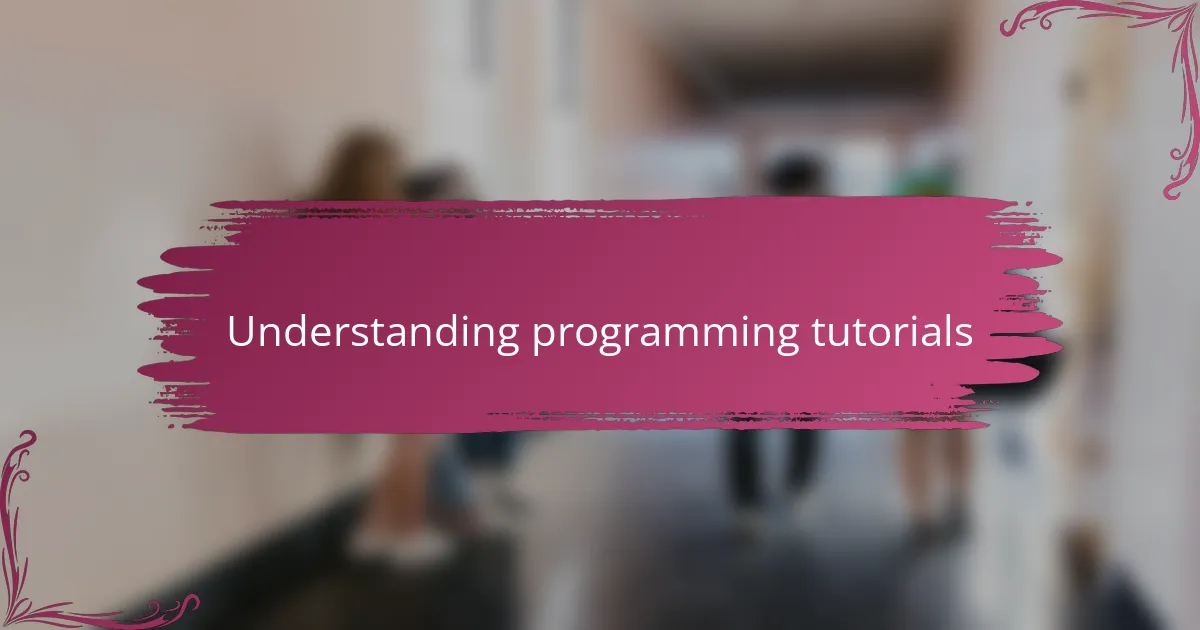
Understanding programming tutorials
When I first approached programming tutorials, I underestimated how critical it was to truly understand their structure. Tutorials are not just a series of instructions—they’re designed to build your knowledge step by step, guiding you from simple concepts to more complex ones. Have you ever felt frustrated halfway through a tutorial because it assumed you already knew something you didn’t? That’s a common experience, and it shows why following the progression carefully matters so much.
I’ve noticed that the best tutorials encourage active learning, not just passive reading. When a tutorial asks you to write code yourself or solve problems, it deepens your grasp in ways just watching or rereading can’t. There’s an emotional satisfaction that comes from figuring out a tricky exercise on your own, which keeps me motivated to keep going.
Understanding programming tutorials also means recognizing that everyone’s learning pace is different. Sometimes, I had to revisit earlier lessons multiple times before things clicked, and that’s perfectly normal. Do you ever find yourself rushing through content only to realize later you missed key ideas? Taking your time is not a weakness; it’s part of truly making the knowledge your own.
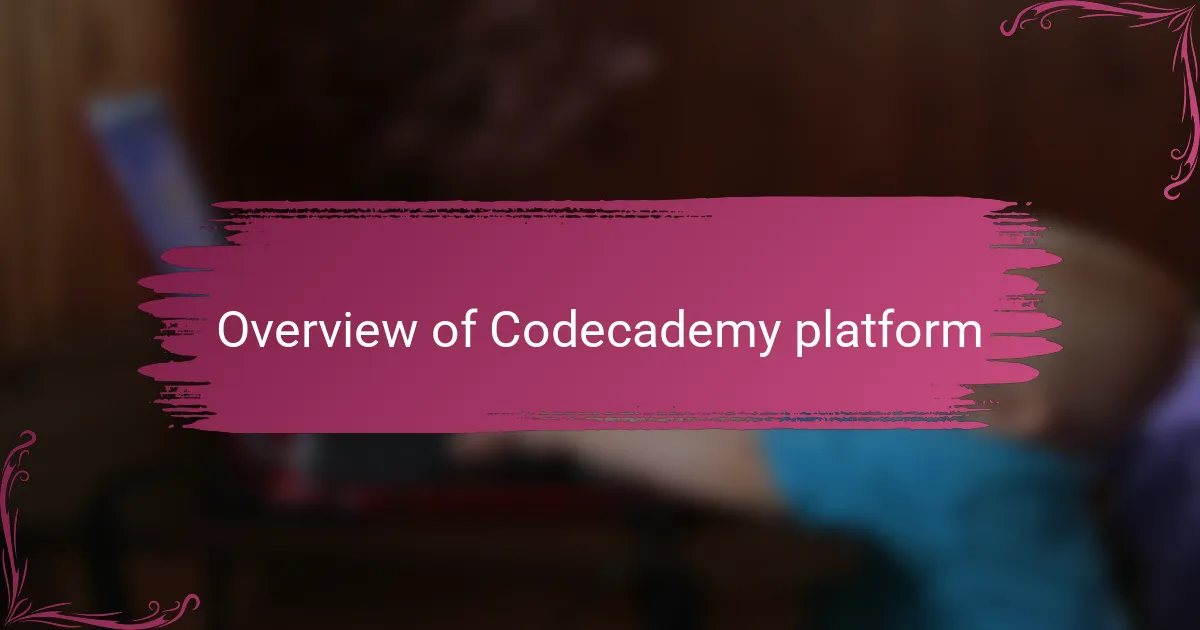
Overview of Codecademy platform
Codecademy stands out to me as a platform that blends interactivity with clarity. Instead of just reading about code, you get to type it out immediately, which makes the learning process feel more tangible. Have you ever noticed how coding only truly sticks when you’re actually doing it, not just watching?
What I appreciate most is how Codecademy breaks down complex topics into manageable exercises. There were times when I felt stuck, but the step-by-step approach helped me inch forward without feeling overwhelmed. It felt like having a patient tutor right beside me, guiding me patiently through each challenge.
The platform’s clean design and instant feedback system also boosted my confidence. Seeing errors highlighted in real-time pushed me to experiment and learn from mistakes instead of fearing them. Have you ever found that making a mistake and fixing it yourself is the best way to understand why it happened? That’s been my experience with Codecademy.

Key features of Codecademy courses
One of the first things that struck me about Codecademy courses is their interactive coding environment. Rather than passively watching or reading, you’re writing code right away, which made the learning feel active and real. Have you ever tried to learn programming by just reading? It rarely sticks for me—that hands-on practice is crucial.
Another feature I found helpful is how Codecademy structures each course with bite-sized lessons and frequent quizzes. These break down what initially seemed like overwhelming concepts into manageable pieces. It reminded me of how breaking a big problem into smaller parts makes it easier to solve, and Codecademy does this so well.
Finally, the instant feedback system really changed the way I approached mistakes. Instead of feeling frustrated or stuck, I got immediate hints and corrections, which encouraged me to experiment and learn from errors. Have you noticed how quickly you improve when you can immediately see where you went wrong? That instant insight made all the difference for me with Codecademy.
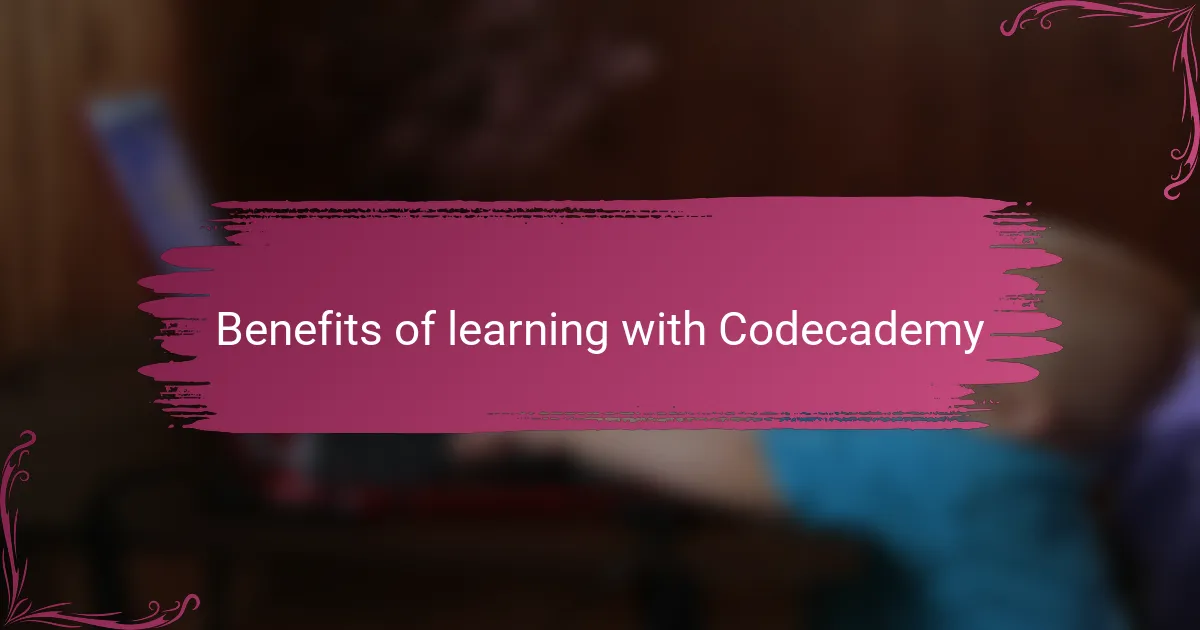
Benefits of learning with Codecademy
What I really appreciate about learning with Codecademy is how it turns coding into an active experience rather than a passive one. Typing out code and seeing instant results makes it feel like I’m truly building skills, not just skimming concepts. Have you noticed how much more confident you feel after solving a problem yourself instead of just reading about it?
Another benefit is how the platform makes complex topics approachable through bite-sized lessons. When I first started, breaking down overwhelming ideas into small steps kept frustration at bay and helped me stay focused. It felt like having a tutor who knows exactly how to pace the learning so it never gets discouraging.
Lastly, the real-time feedback was a game changer for me. Instead of getting stuck or discouraged by mistakes, I could immediately see what needed fixing and why. Have you ever realized that making errors and correcting them right away is actually one of the fastest ways to learn? Codecademy’s feedback loop built my confidence and kept me curious.
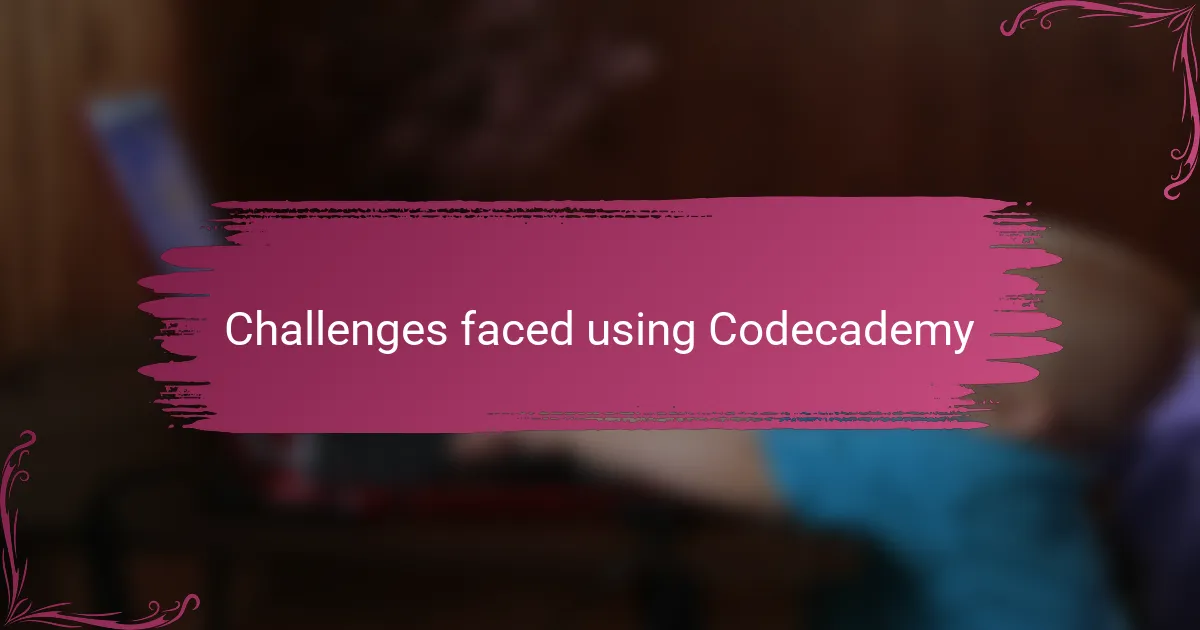
Challenges faced using Codecademy
One challenge I frequently encountered with Codecademy was that some lessons felt a bit too scripted. At times, I wished for more in-depth explanations rather than just following instructions step by step. Have you ever found yourself typing code without fully grasping the why behind it? That gap sometimes left me feeling like I was memorizing rather than truly understanding.
Another frustrating aspect was the occasional lack of context or real-world application. While Codecademy’s exercises are great for practice, I sometimes struggled to connect what I was learning with how it applies outside the platform. It made me wonder, “How will I use this in an actual project?” This disconnect slowed down my motivation on tougher days.
Finally, I noticed that the platform’s hints and solutions could sometimes reveal too much too quickly. It’s tempting to peek when stuck, but doing so sometimes robbed me of the satisfaction that comes from problem-solving. Have you ever felt conflicted between pushing through a tricky bug or looking at the answer? Finding that balance was part of my learning curve with Codecademy.

Personal experience with Codecademy
When I first started using Codecademy, I was surprised by how much the platform encouraged me to learn by doing. I remember tackling a JavaScript exercise that initially felt daunting, but the interactive setup pushed me to experiment with the code until I got it right. Have you ever had that satisfying “aha” moment when something clicks purely because you kept trying? That’s exactly what happened to me, and it made the learning experience genuinely rewarding.
At times, I found myself revisiting certain lessons multiple times—not because the content was difficult, but because the platform made it easy to reflect and absorb the material at my own pace. This flexibility prevented the usual overwhelm I’ve felt with other courses. Did you ever appreciate being able to slow down without feeling like you’re falling behind? Codecademy’s approach made that possible for me.
Still, there were moments when I craved deeper explanations beyond the step-by-step tasks. Typing code without fully understanding the “why” sometimes left me questioning if I was really grasping the concepts. Have you ever typed through an exercise just to get past it, only to realize later that you missed something important? That tension felt real in my learning, but it also motivated me to seek additional resources alongside Codecademy.
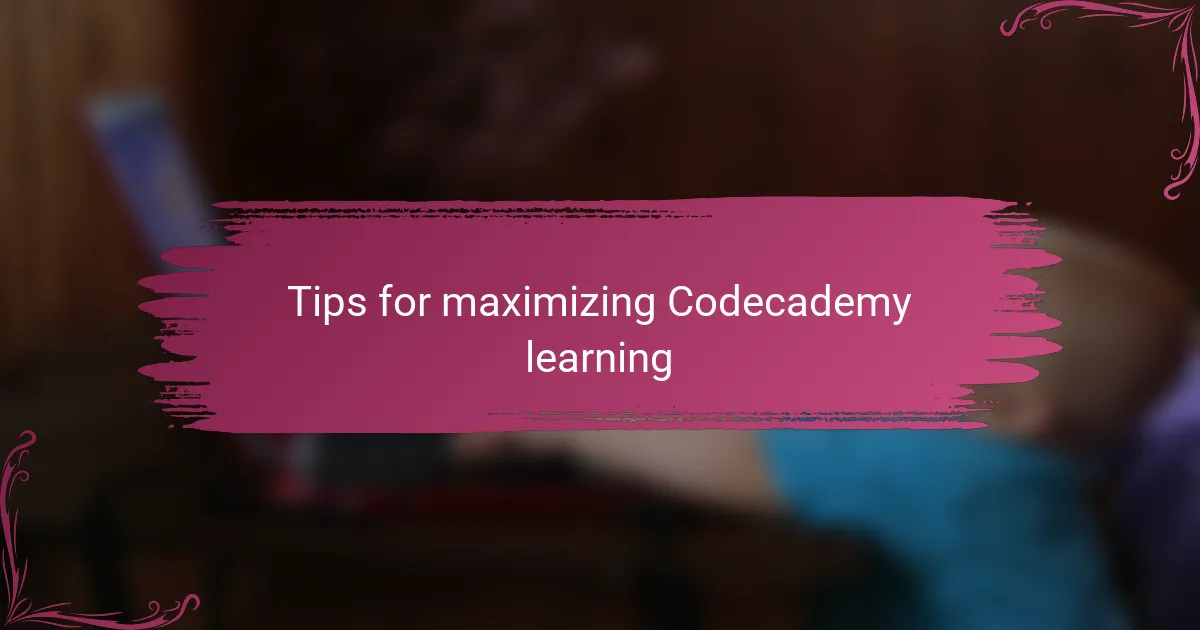
Tips for maximizing Codecademy learning
One tip I’ve found essential is to treat each Codecademy exercise like a mini-challenge, not just a checkbox to tick. When I slowed down and really experimented with the code—changing values, breaking things on purpose—I learned so much more. Have you tried intentionally making mistakes to see how the system reacts? That curiosity sparked some of my best “aha” moments.
Another thing that helped me was setting small, achievable goals for each session. Instead of rushing through multiple lessons, I focused on mastering one concept at a time. It made the progress feel more real and less overwhelming. Have you noticed how hitting these little milestones keeps your motivation steady rather than burning out fast?
Finally, I highly recommend complementing Codecademy’s interactive lessons with external resources or projects. When I applied what I learned in small personal projects, the concepts clicked in a way that exercises alone couldn’t achieve. Have you ever built something simple just for yourself after a lesson? That hands-on application turned abstract ideas into real skills for me.